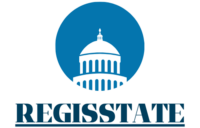In today’s data-driven world, model governance has emerged as a crucial element in ensuring the reliability and integrity of machine learning models. As organizations increasingly rely on AI and machine learning for decision-making, the need for robust governance frameworks becomes imperative to manage risks and maintain compliance. Model governance encompasses the processes, policies, and tools that oversee the creation, validation, and deployment of models.
With the rapid evolution of AI technologies, businesses face challenges in maintaining transparency and accountability in their model operations. Effective model governance helps mitigate these challenges by providing a structured approach to monitor and evaluate models throughout their lifecycle. This not only enhances trust in AI systems but also safeguards against potential biases and errors.
Model Governance
Model governance ensures the safe, ethical, and effective use of machine learning and AI models. It’s critical as organizations integrate AI into their operations.
Definition of Model Governance
Model governance is the framework that oversees the development, usage, and monitoring of AI models. It includes guidelines, policies, and procedures aimed at ensuring models are reliable and aligned with business objectives. By implementing model governance, organizations maintain control over their AI systems and ensure they meet compliance requirements.
Importance of Model Governance in Today’s World
 Model governance plays a pivotal role in today’s AI-driven landscape. As organizations deploy AI models extensively, the need to manage risk and ensure compliance becomes vital. It helps prevent biases and errors, fostering trust among stakeholders. Effective governance aligns AI initiatives with ethical standards, thereby enhancing innovation while safeguarding interests and supporting sustainable digital transformation.
Model governance plays a pivotal role in today’s AI-driven landscape. As organizations deploy AI models extensively, the need to manage risk and ensure compliance becomes vital. It helps prevent biases and errors, fostering trust among stakeholders. Effective governance aligns AI initiatives with ethical standards, thereby enhancing innovation while safeguarding interests and supporting sustainable digital transformation.
Key Components of Model Governance
Model governance is essential for maintaining the integrity and reliability of AI models. These components ensure models align with business objectives while adhering to ethical standards.
Risk Management
Effective risk management identifies and mitigates potential model-related risks. Organizations analyze the impact of model failures and establish corrective procedures to address issues promptly, minimizing financial losses and reputational damage.
Compliance and Regulatory Requirements
Meeting compliance and regulatory requirements is crucial for model governance. Organizations must adhere to industry standards and government regulations, ensuring their models are safe and unbiased. This involves regular audits and documentation, aiding in both transparency and accountability.
Transparency and Accountability
Transparency and accountability in model governance create trust among stakeholders. Organizations document and communicate model decisions, providing clear insights into model operations. These practices ensure responsibility for outcomes, reducing the likelihood of unintended biases or errors.
Best Practices for Effective Model Governance
Implementing effective model governance involves several key practices essential for organizations utilizing AI technologies. These practices form the backbone of a robust governance strategy that ensures models meet critical business and regulatory requirements.
Building a Governance Framework
 A solid governance framework is crucial for managing AI models. Organizations must develop comprehensive policies and procedures guiding model development, deployment, and monitoring. By defining clear roles and responsibilities, companies ensure accountability and transparency in model operations. A well-documented framework also aids compliance with industry standards and regulatory requirements.
A solid governance framework is crucial for managing AI models. Organizations must develop comprehensive policies and procedures guiding model development, deployment, and monitoring. By defining clear roles and responsibilities, companies ensure accountability and transparency in model operations. A well-documented framework also aids compliance with industry standards and regulatory requirements.
Continuous Monitoring and Evaluation
Continuous monitoring and evaluation are vital for maintaining model integrity and performance. Organizations should implement automated systems to track model behavior, identify anomalies, and adjust parameters as needed. Periodic audits help verify that models remain aligned with business objectives and regulatory standards. This ongoing assessment helps identify potential risks and model drift, facilitating timely interventions.
Collaborative Stakeholder Engagement
Engaging stakeholders from various departments ensures a holistic approach to model governance. Collaboration fosters a shared understanding of governance objectives and facilitates the incorporation of diverse perspectives, resulting in more robust models. Regular communication and training sessions help stakeholders stay informed about governance protocols and the latest AI trends, enhancing cooperation and buy-in across the organization.
Governance Frameworks
 Model governance stands as a cornerstone for organizations navigating the complexities of AI and machine learning. By establishing strong governance frameworks, companies can ensure their AI models are reliable and align with ethical and regulatory standards. This not only mitigates risks and biases but also fosters transparency and trust among stakeholders. As AI continues to evolve, addressing challenges like technological barriers and regulatory changes will be crucial. Embracing best practices and future trends in model governance will empower organizations to harness AI’s potential responsibly, driving innovation and sustainable growth in an increasingly digital world.
Model governance stands as a cornerstone for organizations navigating the complexities of AI and machine learning. By establishing strong governance frameworks, companies can ensure their AI models are reliable and align with ethical and regulatory standards. This not only mitigates risks and biases but also fosters transparency and trust among stakeholders. As AI continues to evolve, addressing challenges like technological barriers and regulatory changes will be crucial. Embracing best practices and future trends in model governance will empower organizations to harness AI’s potential responsibly, driving innovation and sustainable growth in an increasingly digital world.



